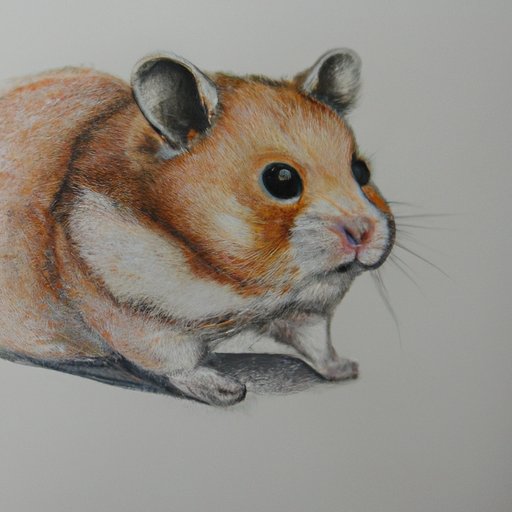
Introduction
Hamsters have become one of the most beloved pets globally, and many people want to learn how to draw them. Drawing hamsters can be a bit tricky because of their unique shapes and small bodies. However, with practice and a few tips and tricks, you can master the art of drawing these adorable rodents. This article will provide you with a comprehensive guide to drawing hamsters, perfect for beginners and experienced artists alike.
5 Simple Steps to Draw a Hamster: A Beginner’s Guide
One of the fundamental tips for drawing hamsters is to start with simple shapes and lines. This will help you get the overall shape and proportions right before adding details. Follow these five simple steps:
- Draw a large circle for the body
- Add two small circles on the side of the larger circle for the cheeks
- Add two small circles for the ears on top of the head
- Draw a small circle for the nose
- Draw the eyes using two small circles and add a curved line for the mouth
Now you can add some details and shading to your hamster to make it look cute and fluffy. Pay attention to the cheeks, fur, and ears to make them look realistic.
From Sketch to Finish: Guide to Drawing a Cute and Fluffy Hamster
To achieve a cute and fluffy look for your hamster, you must add details and texture to your drawing. Here are some tips:
- Use short and thin strokes for the fur, imitating the direction of the hair growth;
- Add fluffiness to the cheeks with a circular motion of your pencil or brush;
- Make your hamster’s eyes big and shiny, adding highlights and shading accordingly. This will bring them to life and make them stand out;
- For a three-dimensional effect, shade and highlight your drawing. This will create depth and make your hamster stand out from the page.
Breaking Down the Basics: Tips for Drawing Realistic Hamsters
To make a realistic hamster drawing, you must study real-life hamsters to capture the proportions and features accurately. Here are some tips:
- Observe the size and shape of the body, head, and tail;
- Study the hamster’s pose and movements. This will help you draw your hamster in different positions;
- Pay attention to the details of its fur, like its color, texture, and direction of hair growth;
- Draw the eyes and nose carefully and render them in a way that captures their appearance,
- Use shading and highlights to imitate the contrast between shadow and light you would see on a real hamster.
Drawing Hamsters: Exploring Different Techniques and Styles
There are different drawing styles and techniques that you can use to draw hamsters. Some of these include:
- Cartoon-style: This is a popular way to draw hamsters. Use simple shapes, bold linework, and exaggerated features to create a fun and playful look.
- Realistic: To draw a realistic hamster, you must use a lot of attention to detail and precise measurements.
- Minimalist: This style involves drawing with limited lines, colors, and shapes, leaving the viewer to fill in the gaps.
Experiment with different techniques and materials, such as colored pencils, watercolors, or digital tools. Play around and find the medium and style that suits you best.
Hamster Drawing Challenge: Can You Perfectly Draw These Popular Pet Rodents?
Now that you’ve acquired some skills in drawing hamsters, it’s time to put your skills to the test. Take up this challenge and see how well you can draw them. Here are some prompts:
- Draw a hamster on a spinning wheel
- Draw a hamster eating its favorite treat
- Draw a hamster peeking out of a tube
- Draw two hamsters cuddling
Remember, challenges are an excellent way to push your limits and improve your skills. You might just surprise yourself!
Drawing Inspiration from Hamsters: How to Turn Your Sketches into Unique Art Pieces
Take inspiration from your own drawings and create unique art pieces. Here are some tips to start:
- Create a series of hamster drawings with different poses and expressions;
- Use different color palettes to create a range of moods and emotions;
- Experiment with different materials and styles to develop your own signature style;
- Draw hamsters in different scenes or environments, like a hamster in space or a hamster in a garden;
- Create a hamster character, complete with backstory and personality traits.
Remember, the key to creating exciting and unique art is to draw inspiration from your own experiences and creativity.
Conclusion
Gaining proficiency in drawing hamsters is all about taking things one step at a time. This comprehensive guide has provided you with the necessary skills and tips to help you perfect your hamster drawing abilities. Remember to take things slowly, study the proportions and details of real-life hamsters, and experiment with different styles and techniques.





